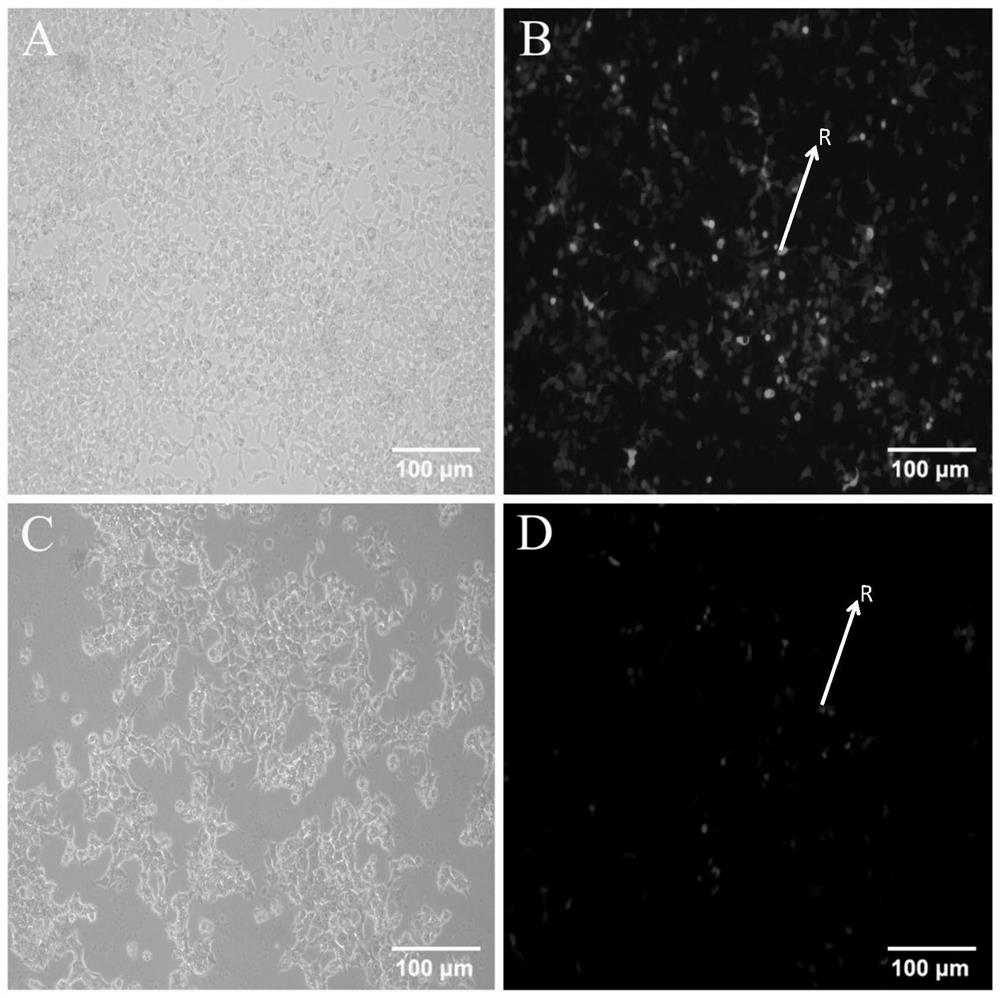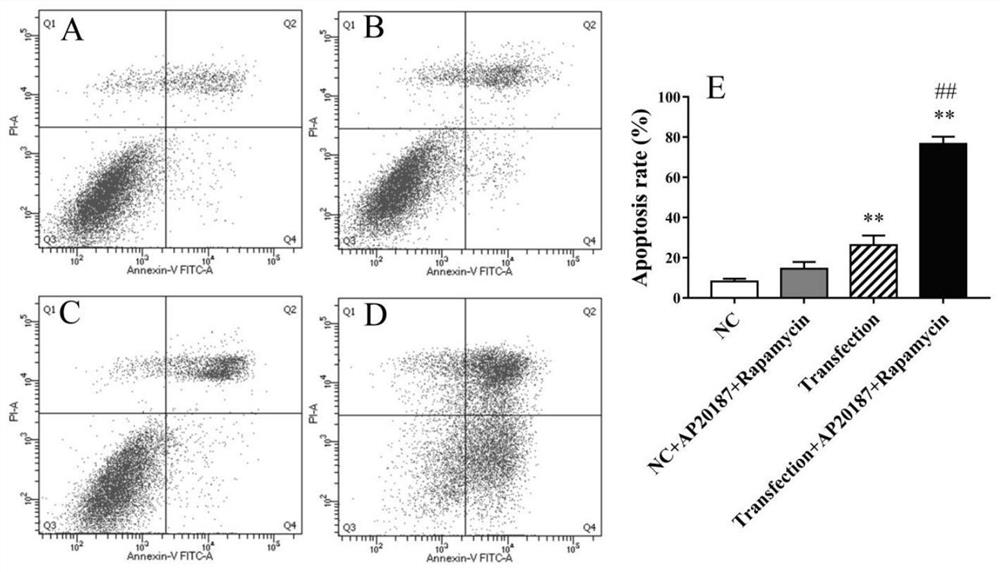Vector system for inducing apoptosis
A carrier system and cell-inducing technology, which is applied in the field of biomedicine, can solve the problems of complex recombination process and time-consuming, and achieve the effect of simple preparation process, intuitive experimental results, and short onset period
- Summary
- Abstract
- Description
- Claims
- Application Information
AI Technical Summary
Problems solved by technology
Method used
Image
Examples
Embodiment
[0024] A vector system for inducing cell apoptosis, including recombinant vector 1 and recombinant vector 2, recombinant vector 1 is Plasmid CMV-FKBP-tdTomato, recombinant vector 2 is Plasmid EF1α-FRBCaspase8-2A-BSD, recombinant vector 1 and recombinant vector 2 The sequences are shown in SEQ ID NO: 3 and SEQ ID NO: 4; the recombinant vector one is formed by connecting the FKBP gene fragment and the backbone plasmid tdTomato-N1, and the FKBP gene fragment is a gene sequence fragment with F36V and L106P mutation sites. The encoded and synthesized protein has poor stability, but has stronger binding ability with other proteins. The sequence of the FKBP gene fragment is shown in SEQ ID NO: 1; the recombinant vector 2 is formed by connecting the FRB Caspase8-2A-BSD fragment with the backbone plasmid lenti Cas9-Blast The fragment of FRB Caspase8-2A-BSD is FRB with three point mutations (FRB*), which is designed to bind rapamycin analogs. The sequence of FRB Caspase8-2A-BSD fragment ...
PUM
 Login to View More
Login to View More Abstract
Description
Claims
Application Information
 Login to View More
Login to View More - R&D
- Intellectual Property
- Life Sciences
- Materials
- Tech Scout
- Unparalleled Data Quality
- Higher Quality Content
- 60% Fewer Hallucinations
Browse by: Latest US Patents, China's latest patents, Technical Efficacy Thesaurus, Application Domain, Technology Topic, Popular Technical Reports.
© 2025 PatSnap. All rights reserved.Legal|Privacy policy|Modern Slavery Act Transparency Statement|Sitemap|About US| Contact US: help@patsnap.com



